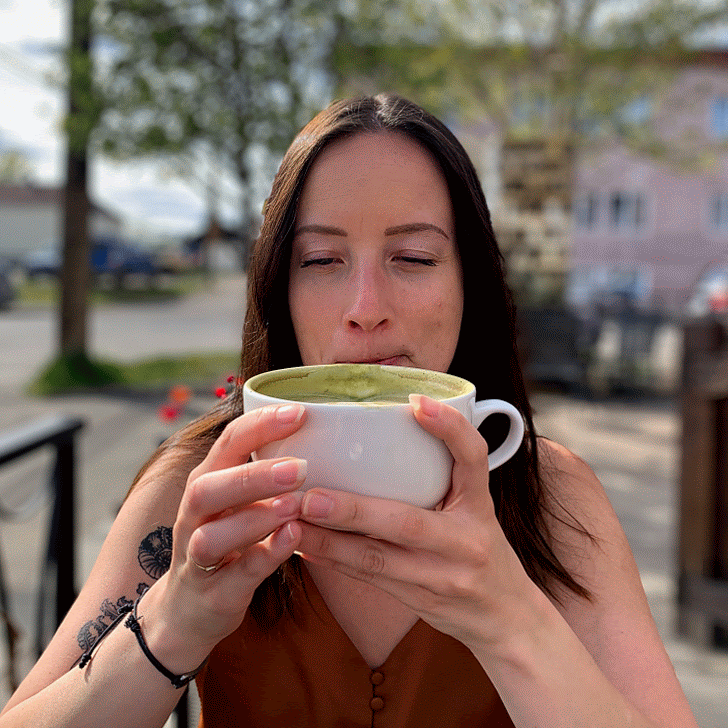Bitters are the missing taste in modern western culture.
The gustatory and vagus nerves mediate bitter receptors throughout your body.
The gustatory nerve alerts the gustatory cortex in the brain, the area responsible for perceiving taste, that bitterness is present. The vagus nerve then relays the message to the rest of the body to switch to parasympathetic. (rest and digest, tend and befriend.)

Bitter receptors are found in the stomach, intestines and lungs. I cannot begin to stress how cool it is that bitter receptors are found outside of the digestive tract. This indicates that bitters have a peripheral effect on our entire physiology when they are consumed.
What do bitters do?
Bitters stimulate appetite, increase digestive secretions and bile, and improve insulin sensitivity and metabolic detoxification.
The Only Caveat…
Bitters must be tasted, taking it in a capsule will not work. The good news is, after increased exposure to bitterness, it doesn’t seem so bad at all. (Take this from an ex-brussel sprout and cilantro hater.) Nowadays, a drop of pure bitter herbs on my tongue is something I look forward to.
History of Bitters
The recorded therapeutic use of bitters in traditional Chinese medicine dates back at least 3,000 years.
Bitters (Tikta) in Ayurveda is also dated back 3,000 years.
Amari is from Italy and aperitifs were recorded in Greece as far back as the fifth century. By the 1900s, aperitifs were also popular in the US but that seems like it was capitalized on by the alcohol industry from where I’m standing. Digestifs are bitters that are served after a meal to help with digestion.
The difference between bitter and sour
I feel like North Americans in general are out of touch with taste due to our indoctrination into a culture of highly palatable foods. (Read: sugar, salt and fat.) Many of us would not know how to describe the difference between sour, bitter or pungent. Sour refers to foods that have a pH between 0-7. For example, apple cider vinegar is sour and not bitter. Here are other examples.
| Sour | Bitter |
| Vinegar Citrus Fruit Rhubarb Gooseberries Cranberries Tart Cherries Sauerkraut (it’s in the name) Yogurt Kombucha | Dandelion leaf and root Brussels sprouts Dark chocolate Black coffee Gin Kale Sesame Seeds/Tahini Many medicinal herbs: mugwort yarrow gentian artichoke leaf chamomile, and many more |
Supplementing Bitters
Though the majority of bitter preparations are alcohol-based, that doesn’t mean you can’t use bitters if you don’t drink. Depending on your comfort level with alcohol, 20 drops of bitter alcohol tincture added to a glass of sparkling water is enough to trigger your bitter receptors.
Bitter herbs can also be infused into apple cider vinegar alternatively. Bitters infused into vinegar would need to be more concentrated with bitters herbs in order to combat the sourness of the vinegar.
Bitterness is also relative because some people have more tastebuds than others. For example, super-tasters need much less bitterness to attain the same therapeutic effect of taking bitters. Tastebuds lose sensitivity as you age, which also explains why children are so much more sensitive to bitters than adults.
Supplementing with a bitter tincture may not be appropriate in some cases, such as during pregnancy. They may not be appropriate for children and alcohol-based tinctures may not be appropriate for people who have a difficult relationship with alcohol. In these cases, a diet rich in bitter foods is instrumental.
Eat your Bitters
Most cruciferous vegetables are bitter because they contain compounds called glucosinolates which are also responsible for many of their health benefits.
I wish I could tell you to just eat a chocolate bar, but that bitter-tasting 80% cacao bar is the one that will do the trick. Good luck on your bitter journey!
Want to get into the nitty-gritty of using personalized bitter herbal formulas? This is something we can do together in my full HELD program.
Bitters for Non-Tasters and Super-Tasters: https://www.hsph.harvard.edu/nutritionsource/2016/05/31/super-tasters-non-tasters-is-it-better-to-be-average/
Taste receptors throughout the body: https://www.sciencedirect.com/science/article/pii/S2095881118300167









